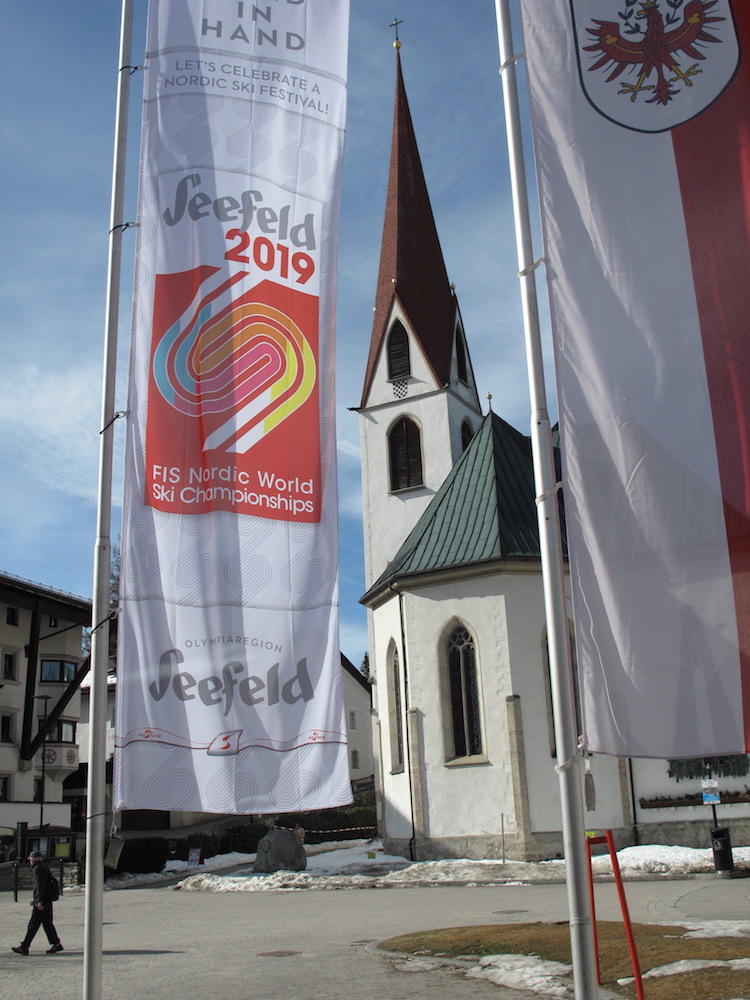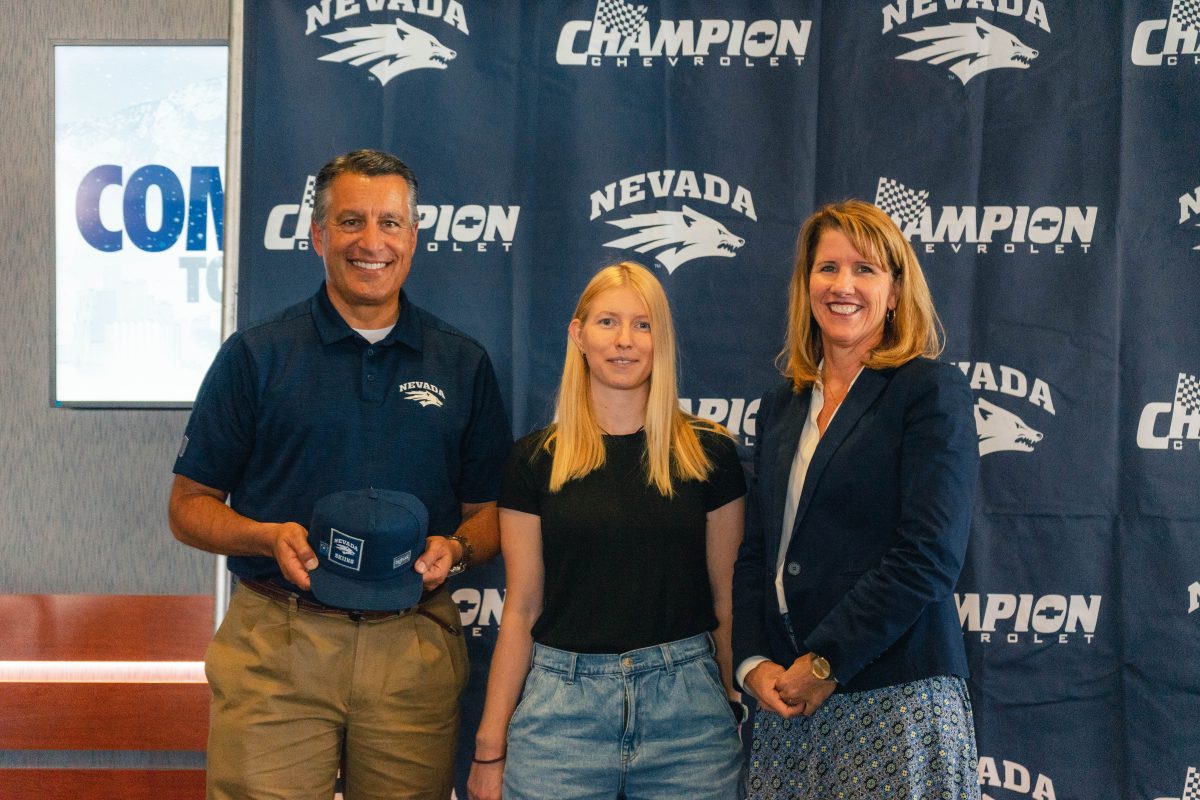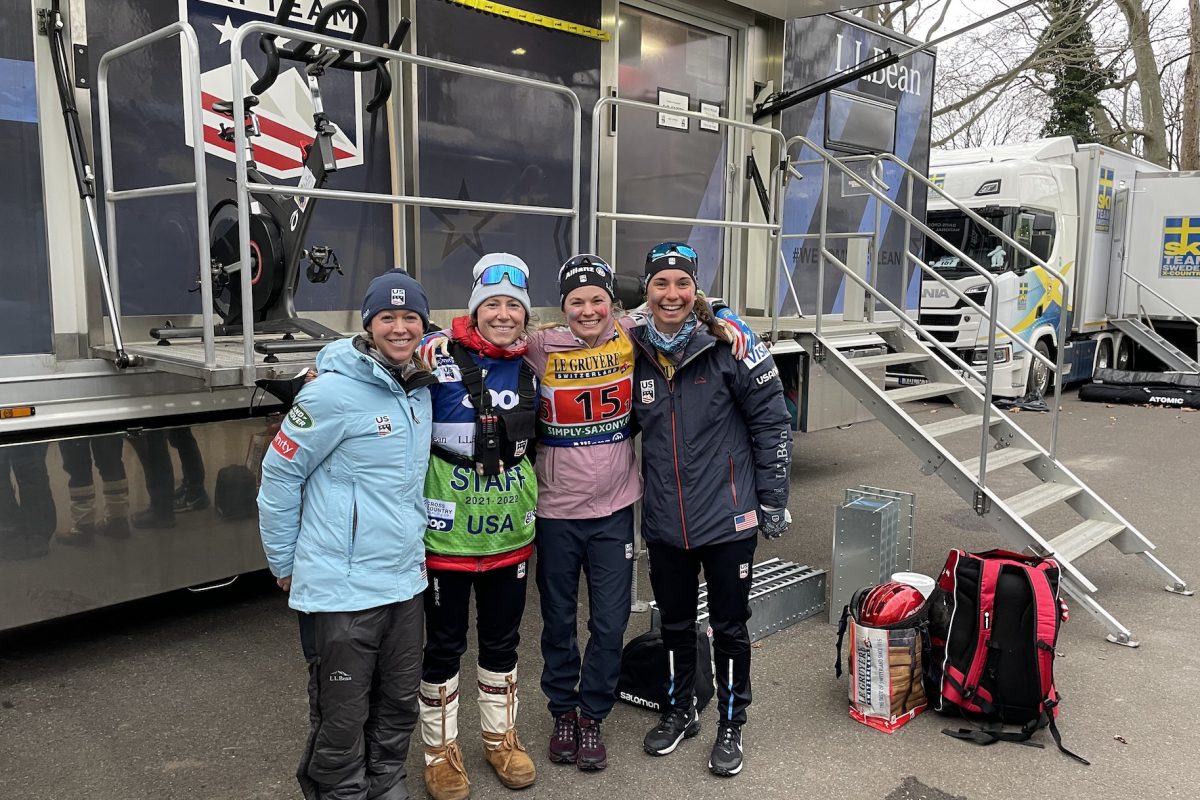
Seefeld in Tirol, Austria will host the 2019 Nordic World Championships. The small town in northern Tyrol sits on a plateau nestled in the alps, about two hours by train south of Munich and about 30 minutes north of Innsbruck. Seefeld has a long history of hosting international nordic competitions, including the 1964 and 1976 Innsbruck Olympic Games, as well as the 1985 World Championships and 2012 Youth Olympic Games. Seefeld holds the historic distinction as the venue where American Bill Koch won his Olympic silver medal in the 30-kilometer event.
We got out for a ski with Elias Walser, the managing director of Seefeld Tourism, on some of the 270+ kilometers of trails he oversees to learn more about the region and the upcoming World Championships.
***

Garrott Kuzzy: You have been the head of Austria’s two largest cross-country ski destinations, Ramsau am Dachstein and Seefeld in Tirol. What makes cross country skiing in Austria unique?
Elias Walser: In my opinion, what sets Austria apart from Scandinavia or North America, is that the cross-country ski trails are surrounded by a dramatic mountain landscape and a fairytale natural environment. At the same time, the trails pass through farms, huts and villages where skiers can stop for refreshment. I believe this combination of nature and access to traditional life in the alps makes Austria one of a kind.
GK: Now that the 2017 Lahti World Championships are complete, the eyes of the nordic world are on Seefeld…well, except for a couple of events in Korea next February. How is Seefeld preparing for the 2019 World Championship?
EW: Our trail construction and renovation for the world championship began in August 2016. We do not want to build buildings that no one needs after 2019 and are making our biggest investments in trails and infrastructure, such as lights and snowmaking. We updating our trail network to provide even more fun and enjoyment in the future, for both beginners and elite athletes alike.
GK: Seefeld is hosting the European Continental Cup (OPA Cup) Final in late March. Many of the big events in North America this winter have been impacted by a lack of snow. How are the winters trending in Seefeld? What are you doing to ensure snow for these big events?
EW: We also notice a change in our winters and have taken steps to adapt. We operate an active snow-management system. This means that we are already working in the summer on what can we do to offer the best cross-country ski trail with as little snow as possible. In the winter, we farm snow from higher elevations. We also have extensive snowmaking for the race trails and the most popular touring trails.

GK: You were in Hochfilzen for the Biathlon World Championships and in Lahti for Nordic Worlds. What were your impressions?
EW: Yes, the atmosphere was sensational at both events! I was actually in Hochfilzen when [American] Lowell Bailey won gold and in Lahti when [Canadian] Alex Harvey outsprinted the field in the 50 k. The crowd was ecstatic cheering on both North Americans. It is beneficial for every sport when athletes from a variety of countries have the potential to win on any given day. It is also exciting to see the growing strength of the American women’s team.
GK: Seefeld has a long history of cross-country skiing. It first received international attention when it hosted cross country events for the 1964 Innsbruck Olympic Games. When/how did skiing start in Seefeld?
EW: Tourism in Seefeld began in the 19th century, attracting guests seeking an escape from cities during hot summers. It was only after the Second World War that winter became increasingly popular. Seefeld became known for its extensive winter sporting experiences, including alpine skiing, cross-country skiing, ice skating, Eisstockschiessen (Austrian curling), winter hiking, horse-drawn carriage rides and tobogganing. Those traditions continue today, except that the barn lofts where guests used to stay have evolved into hotels with restaurants, pools and spas. Guests not only want to go skiing–they want to enjoy winter as a whole experience.
GK: Do you have/know of any notable stories/history from the 1964 or 1976 Games in Seefeld?
EW: If you see the old pictures, it is just incredible how courageous and sporty the athletes were … ski jumpers, for example, going over 120 meters on early fiberglass skis. 1964 was actually the first year that ski jumping featured both normal and large hill competitions. Overall, the whole effort around the Games was much simpler and less complicated that it is today.

GK: One of the most historic decisions for the sport of cross-country skiing was made in the Seekirchl, the iconic church at the trailhead in Seefeld, after the 1985 Seefeld World Championships. Can you share that story?
EW: 1985 in Seefeld was the last World Championships when skating was not allowed. Despite that, the top athletes all used the “Siitonen-Schritt,” marathon skate named after Finn Pauli Siitonen. After the Championships, FIS officials met in the Seekirchl and decided to recognize skating as its own technique. That’s how skate technique was officially born and Seefeld became the “cradle of skating.”
GK: Seefeld is an annual stop on the Nordic Combined World Cup, but Austria has not hosted a Cross-Country World Cup since 2004 in Ramsau. Seefeld has only hosted two World Cups since the 1985 World Championships (1996 and 1999). What inspired Seefeld to bid on the 2019 Championships?
EW: We want to lead cross-country skiing into the next dimension. We see cross-country skiing continue to evolve as a sport and also grow as a major attraction in our region. After renovating almost all venues and homologating our race trails, it was an obvious choice to submit our bid. We were fortunate that our first application to host the championships was convincing enough to earn the bid.
GK: The 2018 World Cup in Seefeld is considered the test event for the World Championships. Are you nervous for that test? If so, what are you most nervous about?

EW: Exactly. We will see how well the cross-country trails and venue flow in the competition mode. This can only be seen in a big race. We are optimistic that the new courses will receive praise from the racers.
GK: You worked with Whistler Tourism for a year after the 2010 Olympic Games. Do you see Whistler hosting future international competitions?
EW: Unfortunately, I’m not sure.
GK: Innsbruck is in the middle of a feasibility study for the 2026 Olympic Games. Should the study find hosting the Games feasible, a referendum will be put forth to residents next fall. What are your thoughts on Innsbruck hosting its third Olympic Games?
EW: I believe it is important for the Olympic Games to not just be about the growth and development of new markets. It is also about the Olympic spirit. For this reason, the Games should also return to places where this spirit has been born. I find the application of Tyrol with its unique locations, from Kitzbühel to Arlberg, a wonderful idea.
GK: From your experience with North American skiers when you lived in Canada, how would Seefeld appeal to a skier from North America? What makes Seefeld unique? What highlights are on top of your list?

EW: The combination of gemütlichen Hütten [cozy huts] with good food along the trails and the variety of winter activities is part of what makes Seefeld unique. The accessibility from North America via direct flights to Munich is certainly also a great advantage. Innsbruck is always a welcome host for a day trip. With Seefeld as your base camp, you can really experience the alps.
GK: The name “Seefeld” literally translates into English as “Lakefield.” Is there a lake in Seefeld? Will Seefeld put in a bid to host Waterskiing World Championships?
EW: Ha! We have lots of beautiful lakes. They are all a little too small and pristine for waterskiing. However, stand-up paddleboarding makes for great cross-training in the summer.
***
About Garrott Kuzzy
Garrott competed in the 2010 Olympic Games and raced several years with the US Ski Team and the CXC Team. He is founder of Lumi Experiences, a company focused on cross-country ski trips in the alps. Lumi Experiences is partnering with the National Nordic Foundation to offer a trip to the 2018 World Cup in Seefeld and the opportunity to ski in the Dolomitenlauf Worldloppet.



